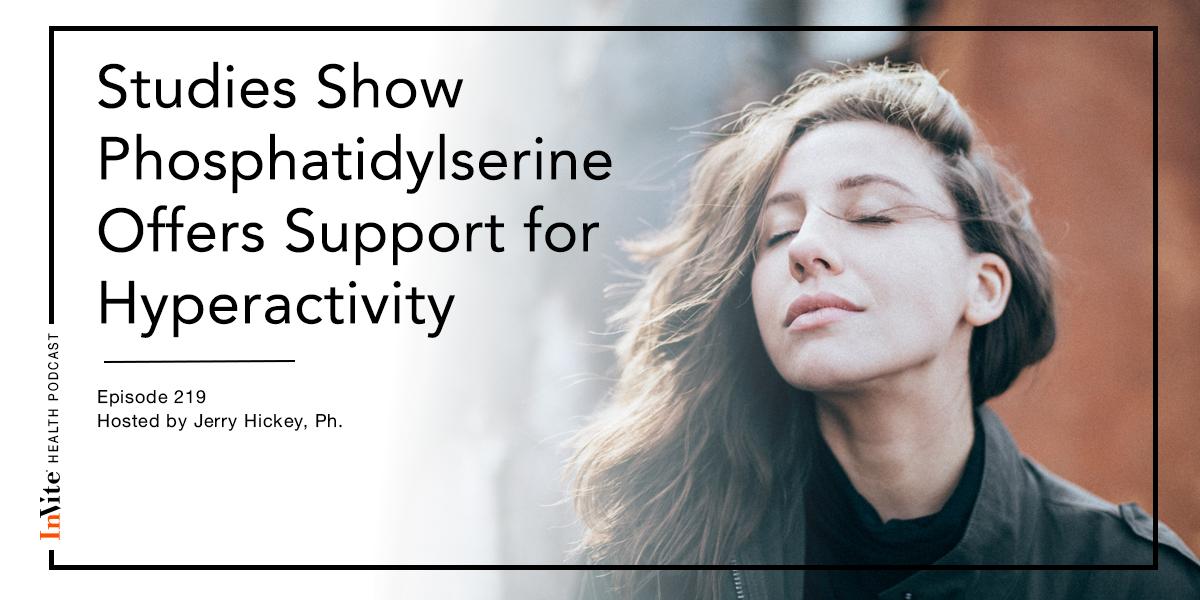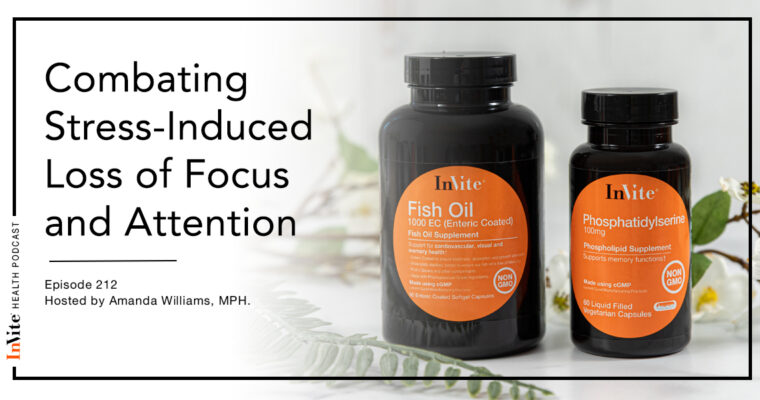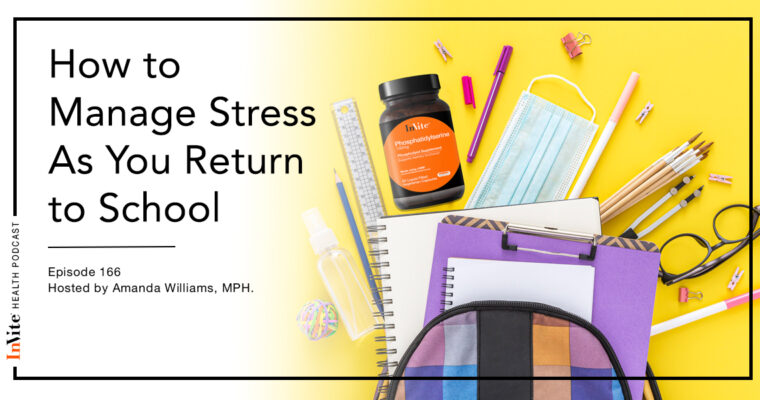Phosphatidylserine
Invite Health Podcast, Episode hosted by Jerry Hickey. Ph
Subscribe Today!
There are certain ingredients in foods and supplements that can help support brain health in children and adults with ADHD and ADD. ADHD is Attention Deficit and Hyperactivity Disorder and ADD is Attention Deficit Disorder, the difference mostly being one is very hyperactive and can’t sit still, and the other is not. Either way, you can improve the way the brain functions, and this has to do with fats and certain nutrients that are incorporated into the fats.
Why does the brain need healthy fats?
Our brain is about 60% fat. The right fats are very important for your memory, mood, attention span, and we’ve known this for decades. These fats come from fish oils or flaxseed oil, omega-3 oils or omega-6 oils, which come from vegetable oils. These are very important for the housing of the brain cells. The outside of the brain cell is not hard. It’s mostly made out of lipids, which are fatty-type substances like the fish oils and the vegetable oils. This is important. The malleability of the outer layers of the brain cell allows nutrients to get into the cell quickly and toxins to leave the cell, but also the transfer of energy and information from cell to cell more efficiently.
We’ve known for decades that fish oils are really important for the brain. They rescue memory in elderly adults. They help control your mood. They help fight off the symptoms of stress and anxiety. But, unless you have key nutrients impregnated into these oils in the brain cell, it’s not going to help. The fish oils are not going to be able to protect you from memory loss. A key one of these nutrients is called Phosphatidylserine.†
Essential Nutrients for Attention and Focus – InVite Health Podcast, Episode 30. Listen Now >>

What is Phosphatidylserine?
There’s a lot of evidence that Phosphatidylserine, along with vegetable oils and especially fish oils, improves the brain function of children and adults with ADD and ADHD.†
Phosphatidylserine is primarily used for improving memory, learning and attention span. We can get it from fish, egg yolks, and legumes. The problem is that, for many of us, what we get through our diet is not enough. In fact, as we age, the amount of Phosphatidylserine, just like fish oil, in the brain declines. Also, people with ADHD do not utilize these oils from foods very effectively, so giving them additional fish oils or an evening primrose oil capsule helps them. But if you add Phosphatidylserine, that’s really key.†
Phosphatidylserine comprises a lot of the phospholipid layer of the brain. It was first discovered in 1941. It very quickly became popular in Europe because they did some pioneering clinical studies in Italy where they found it helped with the memory of aging people. We make Phosphatidylserine in our body a little bit and we get it from food. There’s an ounce in our body from the neck down and there’s an ounce in our brain. The American diet typically lacks Phosphatidylserine, so taking a capsule for anybody is often a good idea.†
Phosphatidylserine gets incorporated into the bilipid layer, the membrane of the brain cell. It helps keep it elastic, resilient and malleable, which allows nutrition to get into the cell. It also allows toxins to leave the brain cell. In addition to that, the Phosphatidylserine content of the brain cell facilitates the release of neurotransmitters such as dopamine, norepinephrine, serotonin and melatonin.†
Combating Stress-Induced Loss of Focus and Attention – InVite Health Podcast, Episode 212. Listen Now >>
For more details on the role Phosphatidylserine plays in the brain and how it can help with hyperactivity, tune into the full podcast episode.
Thank you for tuning in to the Invite Health Podcast. You can find all of our episodes for free wherever you listen to podcasts or by visiting www.invitehealth.com/podcast. Make sure you subscribe and leave us a review! Follow us on Facebook, Twitter and Instagram at Invite Health today. We’ll see you next time on another episode of the Invite Health Podcast.










